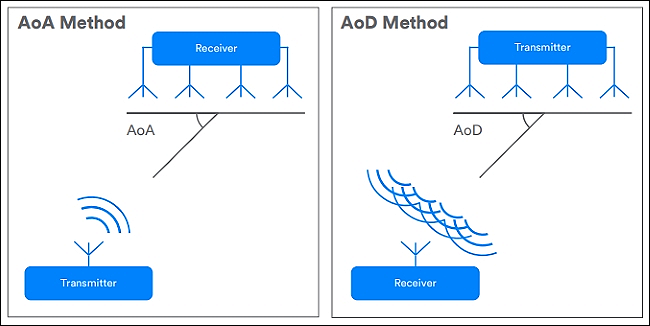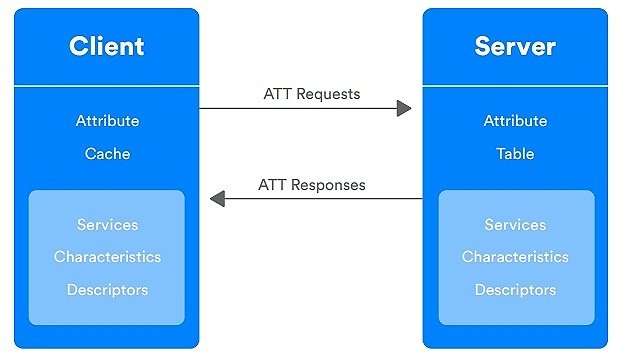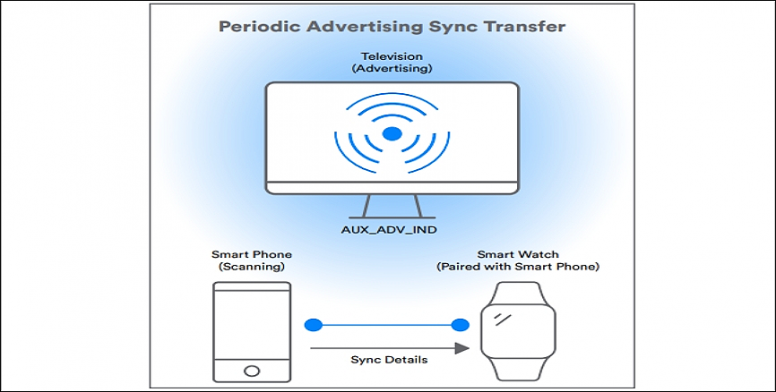Bluetooth is one of the wireless technologies that is utilized as a medium of sharing files or exchanging data over short distances, between two Bluetooth enabled devices. Using Bluetooth connection, we can connect headphones, mouse, keyboards or other accessories to PCs, smartphones or can even track a lost device from the other paired device. In January 2019, Bluetooth Special Interest Group or SIG which handles Bluetooth introduced Bluetooth 5.1.
The new version is fully loaded with tons of new features and improvements; those include new Direction Finding, GATT caching enhancements, improved connection stability, reliability, scalability, better energy efficiency and many more. Thereafter, let’s delve deep into the topic and have a closer look at each of those.
Bluetooth 5.1 Features:
1. Direction Finding
Bluetooth devices can now pinpoint your location with Direction Finding. This new feature lets your Bluetooth devices find out the direction of a Bluetooth signal, enabling the development of Bluetooth proximity solutions and Bluetooth positioning systems, to make out device’s direction and achieve down to centimeter-level location accuracy, respectively. Bluetooth 5.1 offers two different methods to determine the direction – Angle of Arrival (AoA) and Angle of Departure (AoD).
The angle of Arrival (AoA) and Angle of Departure (AoD)
For either of these methods, one of the two devices must have an array of multiple antennae, and the data received from those antennae can be used to identify the direction of the Bluetooth signal. Generally, in the case of the AoA method, these antennae are included in the receiving device and in the case of AoD, the transmitting device comprises it. Direction Finding lets Bluetooth Low Energy controller in the receiving device create a set of data which can be used to calculate the directional angle between it and the transmitting device; this directional angle information is for creating Bluetooth-based positioning systems that include RTLS (Real-time Locating Systems) and IPS (Indoor Positioning Systems).

2. GATT Caching Enhancements
Bluetooth Low Energy devices use Generic Attribute Profile or GATT for connecting to each other. All GATT devices contain a database which is known as the Attributes table – it holds device identifier information such as GATT service, characteristic and many more. Whenever a client device connects to a server device, it performs the ‘service discovery’ to see what the server device is capable of. In Bluetooth 5.0, this process takes much time as well as energy and ends up causing a poor connection.

Service Discovery and Attribute Caching
The new Bluetooth 5.1 can perform more aggressive caching and the clients can actually skip the ‘service discovery’ stage. Since the discovery process is not repeated every time when the client device is trying to connect, it delivers a better connection and improves battery life.
3. Advertising Enhancements
‘Advertising’ means how a Bluetooth device broadcasts its availability to connect to other nearby Bluetooth devices. Generally, if so many Bluetooth devices advertise their connection in a specific area, they’ll interact and cause connection problems. In Bluetooth 5.0, Bluetooth Low Energy devices broadcast their availability to nearby devices via 3 specific channels. Since these use only three channels, if two or more devices are present there, there’s a high chance of getting a poor connection. But in Bluetooth 5.1, devices choose channels randomly with Randomized Advertising Channel Indexing.
Periodic Advertising Sync Transfer Usage Example
Bluetooth 5.1 comes with another useful feature as well – Periodic Advertising Sync Transfer or PAST. This feature is mainly for Bluetooth Low Energy devices such as smartwatches, smart bands and many more. What this feature does, is that it lets the transfer of the device scheduled tasks with less energy. For example, if your phone has already made a schedule with TV, it can directly share that schedule with your smartwatch.

4. Other Minor Enhancements
- HCI support for Debug Keys in Low Energy secure connections.
- Sleep clock accuracy update mechanism.
- Allow the SID and ADI to appear in scan response data.
- Specify behavior when rules are violated.
Conclusion
As you’re seeing, Bluetooth 5.1 clearly has an upper hand over its predecessor in every term. With Bluetooth 5.0 standard, we can find the lost device yet it isn’t that much accurate, while on the other hand, Bluetooth 5.1 is capable of tracking Bluetooth devices within inches of one’s exact location. Furthermore, it can deliver better battery life, low power consumption, and improved connection, compared to the predecessor. It’s also being said that Bluetooth 5.1 will change the meaning of smart home automation.




